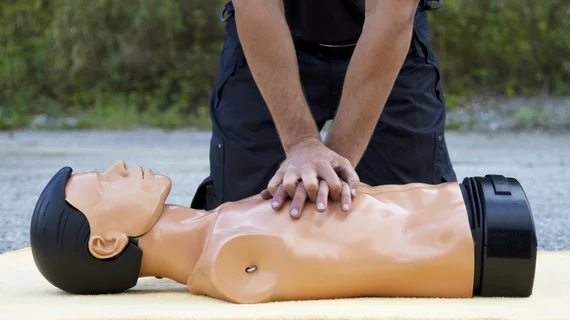In response to the ongoing COVID-19 pandemic, including the highly contagious delta and omicron variants, the American Heart Association (AHA) and other organizations have collaborated on new CPR guidelines that make the health and safety of all healthcare professionals a top priority.
The new document, published in Circulation: Cardiovascular Quality and Outcomes, is the work of dozens of experts. The guidelines also reflect recommendations from the World Health Organization and CDC.
“Health care professionals are paramount to the health of communities around the world, especially during a pandemic, and they should be protected while performing health care procedures including resuscitation,” lead author Dianne Atkins, MD, volunteer chair of the American Heart Association Emergency Cardiovascular Care Committee, said in a prepared statement. “Protecting the health and safety of health care professionals remains critical and includes ensuring the recommended personal protective equipment is available and that health care professionals are trained to use it properly.”
According to the guidance, all healthcare providers treating suspected or confirmed COVID-19 patients should wear a respirator (e.g., N95) along with other PPE (gown, gloves, and eye protection) when performing aerosol-generating procedures or in a setting where such procedures are regularly performed. This includes wearing appropriate PPE before performing the components of resuscitation that are aerosol-generating, which include chest compressions, defibrillation, bag-mask ventilation, intubation and positive-pressure ventilation.
Cardiac arrest survival rates have slowed drastically during the COVID-19 pandemic, according to the AHA's statement. Also, out-of-hospital cardiac arrest survival rates dropped in 2020 in areas that did and did not have significant COVID infection rates.
The guidelines also note that healthcare organizations should continue to secure suitable PPE, ensure training regarding the correct application and use of PPE and make sure healthcare providers have instant access to appropriate PPE when emergency care is needed.
Read the full guidance here.
